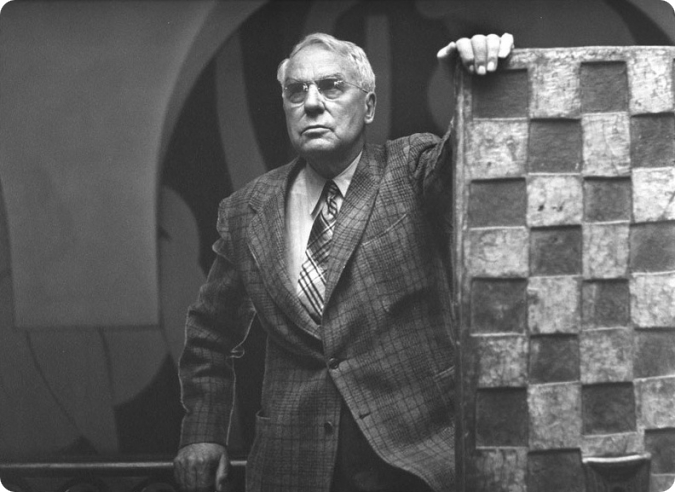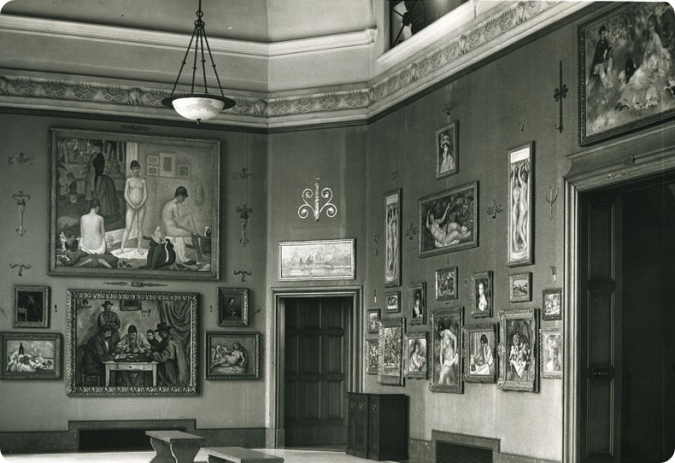
Imagine, you are an art lover and through the years you have managed to acquire a beautiful art collection consisting of 9000 pieces. These pieces are not simple paintings you managed to buy on some market, but are actually made by famous painters. You bought them when the art world wasn’t very interested in their work yet. You have managed to get 181 paintings by Renoir, 69 Cézannes, 60 pieces by Matisse, 44 Picassos and 14 Modiglianis. It also happens that those works are amongst the best those artists made. Total worth: 25 billion dollars. Despite that you are not interested in selling any of it and also don’t want other museums to temporarily show them. You have decided to show all the paintings in a special building and make it an art school so only a few people can see them and learn about them. That is exactly what Albert C. Barnes had managed to realise during his life.
He owned the most impressive art collection in the world and only wanted those who could really appreciate the art to see it. He did not want art to be seen as something to sell tickets and make money. In his will he made a few things clear: After his death the art could not be taken from the wall and be sent to a museum. His “Barnes foundation” would remain an educational institution, which would only be open 2 days a week. But with such an impressive collection would his will be respected?

In this documentary director Don Argott paints a detailed picture of Albert C. Barnes and everything he stood for. Even though his will was initially respected, everything changed once his successor passed away. Those who should be taking care of the collection were trying to find ways to go around parts of the will, often trying to do this using public opinion, but also political force. They wanted everyone to believe that the building was in bad condition and that there wasn’t enough money available to renovate. Slowly but surely the wishes of the original owner seemed to become less important as the step was taken to tour the world with the collection. It changed everything. Even though there were action groups fighting against it all, it seemed nothing was able to stop what was happening. There was money to be made off this collection and everything seemed to be allowed to do so.

The Art of the Steal shows that art is simply an industry where it’s all about sales: selling ticket, reproductions of paintings (on posters/mugs/bags etcetera). The final wishes of a man seem to be less important than the money to be made, even if that’s legally an issue. Through various interviews with action group members, former students and keepers of the collection that becomes painfully clear. For me this documentary is enough reason to never visit the collection if I happen to be in the neighbourhood, out of principle. I hope that my final wishes will be respected, even if I don’t own a art collection worth billions, and that my will isn’t seen as an annoying piece of paper that people will try to get rid off.


![]()
Trailer:
[youtube=https://www.youtube.com/watch?v=XMe3r9PLtpI]

Sounds interesting, Nostra. And completely different from the art film of the same name I reviewed only a few days back. I think the question of whether a Will should be (or have the power to be) completely irrefutable into infinity is a bit of a reach, but I do think a statute of limitations would be a hugely important step in this kind of retroactive rescinding of a persons wishes.
It is very interesting and definitely something completely different from what you recently saw. I’m not sure, in this case he has a vision about his collection and it wasn’t unreasonable so the way they went with it is something I don’t support.
I’m going to watch this one. I remember this event when it was in the news. Thanks for reviewing.
Enjoy it!
Was there a recent film on this subject featuring Kurt Russel and Matt Dillon? And that’s was sad! Nevertheless, i’ll check out this film soon. Thanks for the review
Yeah, there was a recent film with the same title although I’m pretty sure it has slightly different subject matter. You are welcome!